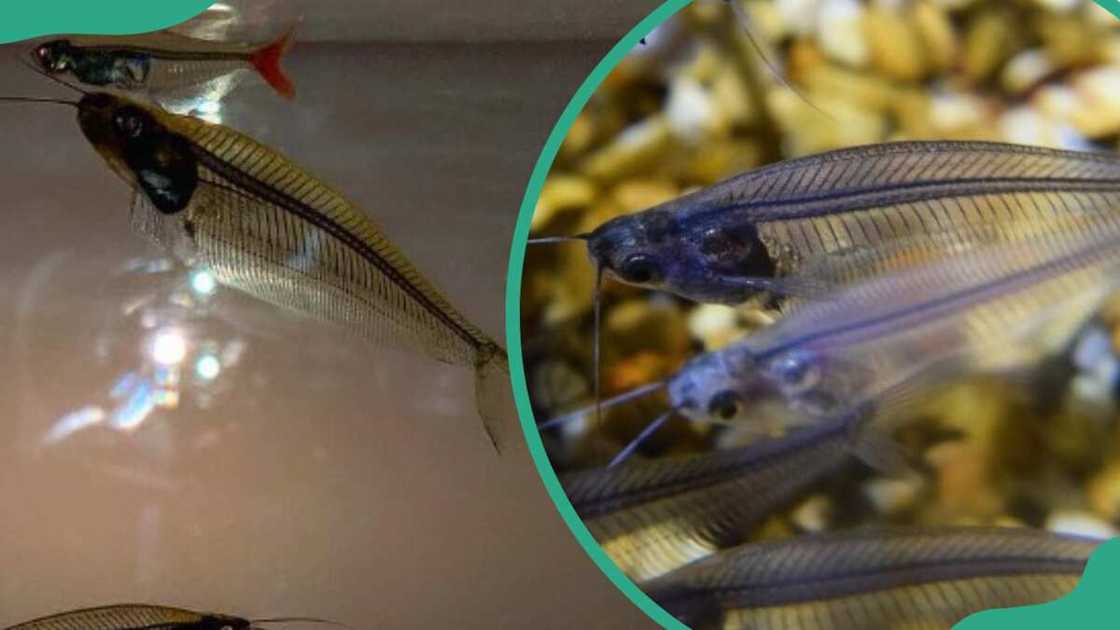X-ray fish facts: Interesting things you should know about them
Numerous types of fish exist worldwide and come in all shapes and sizes. The X-ray fish is one unique breed found in the South American region. This breed has other names like water goldfinch, golden Pristella tetra, or the X-ray tetra. If you are wondering what this fish is, here are some interesting facts about it. Peter C. Wainwright, a Professor of Evolution and Ecology at the University of California, Davis, explains the unique characteristics of X-ray fish and the science behind their transparency, clearing up some common myths about these creatures.

Source: UGC
TABLE OF CONTENTS
The X-ray fish type comes from the Pristella maxillaris species. They are known for having see-through skin that resembles an X-ray. The X-ray species have unique characteristics that make them stand out from other species.
What defines X-ray fish and sets them apart?
Peter C. Wainwright, a Professor of Evolution and Ecology at the University of California, Davis, explained in an interview that X-ray fish refers to several species with a transparent body, making it look like you can see through their internal organs. He explained:
The phenomenon is relatively common in freshwater fish, including several species of tetras (Characidae—or characins), some catfish, and members of Ambassidae (the Asiatic glassfishes).
In the marine realm, it is a common phenomenon in larval fish. Marine fish larvae are usually planktonic (live in the open ocean), and being transparent is a method of camouflaging for these fish larvae. Marine fish larvae are tiny but typically 1-15 cm long.
Professor Wainwright also mentioned that their transparency sets X-ray fish apart, mainly to avoid predator detection. He explained how they achieve their transparency:
(Their transparency) is complex as it almost always involves multiple specific modifications. First, fish will lose all pigments in the body regions that become transparent. This is often enough to make a small fish transparent because muscle is not naturally pigmented.
The organs in the abdomen are not transparent, but the body's and the skin's muscles can be transparent. Fish use additional modifications, including orienting molecules in a single direction and spacing them in a wave that makes them hard to see.
Common misconceptions about X-ray fish
Professor Wainwright pointed out the common misconception most people may have about these kinds of fish, he said:
One might think the entire fish is invisible, but it’s not like that. Some structures cannot be made transparent (the abdominal organs like the liver, the eyes, etc.). X-ray fish are never invisible but transparent, which is pretty impressive.
X-ray fish facts
The X-ray fish is a rare species, and many people have no idea where or how they look. Despite their translucent skin, there are many interesting facts about them. Below is a list of facts about X-ray fish you should know.
- The species originated in the coastal Amazon areas of Brazil, Venezuela, and Guyana. Unlike most tetras, they can tolerate the brackish waters of the Amazon River, one of the world's most famous rivers.
- The species are peaceful, have a calm temperament, and are not aggressive toward other species. They are a great company when put in an aquarium or tank.
- The X-ray fish size is small and can only grow to 1.9 inches. The females are bigger than their male counterparts.
- The water species' appearance is silver or yellow. Its fins have yellow, black, and white stripes. Its translucent skin makes its internal bony structure visible.
- The fish's bony internal structure picks up sound waves and helps them in their acute sense of hearing.
- X-ray tetras are among the most popular X-ray fish freshwater kept in aquariums worldwide. Although native to brackish water in the Amazon, they thrive well in freshwater environments, including streams, tributaries, and flooded vegetation zones.

Source: UGC
- The species feeds on animals and plants. The omnivorous fish eats small worms, water insects, larvae, and tiny shrimp. Plants and algal substances also supplement their diet.
- X-ray fish breeding is done in pairs in a tank. The water should be soft and acidic, with plenty of fine-leaved plants. The females can scatter 500 eggs triggered by the morning sun's rays.
- After the eggs are released, the pair should be removed from the aquarium to prevent them from predating on the eggs or the hatched young ones. The egg takes two to four days to hatch. The wet seasons provide different breeding grounds for the fish in their typical environment. The new environments are also a source of food.
- It does not give birth to young ones but instead lays eggs. When it rains, the X-ray fish scatter over 300 eggs in grass and vegetation lands. Within 24 hours, the eggs hatch, and the young ones can swim after a few days.
- The hatched young ones reach maturity after a few months. Their lifespan in the wild is three years, but they can survive for more than seven years in a tank. Their high reproduction rate makes them popular in aquaria.
Are X-ray fish real?
It is a unique, translucent real fish that originates in the Amazon basin. It thrives in fresh and brackish water.
Where do X-ray fish live?
The species lives in brackish and fresh water and is native to the coastal regions of Guyana, Venezuela, and Brazil.
Are X-ray fish see-through?
This species is see-through or transparent. Its body is translucent, and its internal structure can be seen through its transparent skin.
How many X-ray tetras should be kept together?
This breed of fish should be kept in groups of at least six. They should be kept in a dark aquarium with aquatic plants. This will make them feel safe and allow them to display their color comfortably.
What is the group of X-ray fish?
When the X-ray fish are in a group, they are called a shoal or school. Most X-ray fish swim in schools to protect themselves from predators.
The X-ray fish is found in the Amazon basin in the South American region. This fish species is known for its translucent skin, which allows its bony internal structures to be visible. It lives in fresh water and moves in groups called schools.
Legit.ng published an article about fun facts about Texas. Texas is an American state located in the southern part of the country. It borders Mexico and is rich in culture, history, and cuisine. You can enjoy numerous fun facts about Texas with your loved ones.
Texas is a famous state, also known as the Lone Star State. It is a vast land with numerous attraction sites and diverse people. The state has a rich political history and is among the best travel destinations. Discover more interesting facts about this state if you want to visit or relocate.
Source: Legit.ng

Naomi Karina (Lifestyle writer) Naomi Karina has been a digital content writer for more than two years. She joined the Legit team in August 2022. She graduated Bachelor of Commerce from KCA University in 2012. She also holds a Higher Diploma in Human Resources from the IHRM and a Diploma in Marketing from Kenyatta University. She is a content creator who enjoys writing about various topics such as biographies, entertainment and business. In 2023, Naomi finished the AFP course on Digital Investigation Techniques. She expanded her skills in 2024 by undertaking the Google News Initiative course.

Mary Ugbodaga (Lifestyle Journalist) Mary Ugbodaga is a Legit.ng journalist with 7 years of experience in journalism and media communications. She graduated from Covenant University in 2018 with a Bachelor's degree in Mass Communication/Media Studies. Mary previously worked as a journalist at TheCable, CNBC AFRICA, Voice of Nigeria, KPMG Nigeria. Email: mary.ugbodaga@corp.legit.ng.

